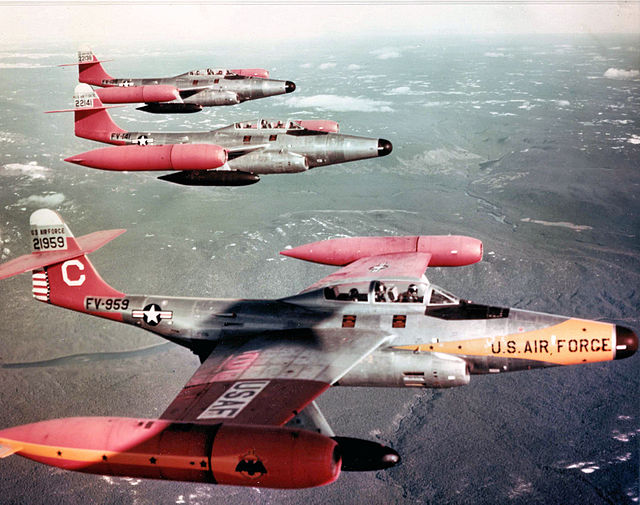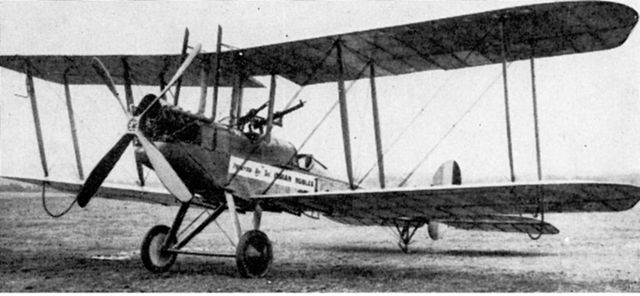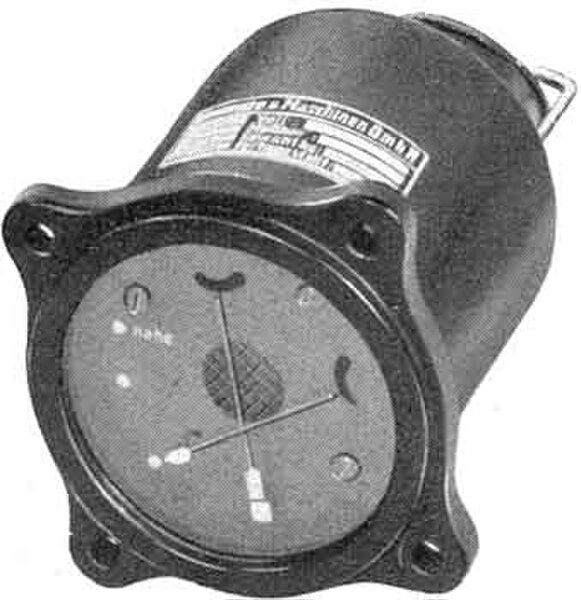The Northrop F-89 Scorpion is an all-weather, twin-engined interceptor aircraft designed and produced by the American aircraft manufacturer Northrop Corporation. It was the first jet-powered aircraft to be designed for the interceptor role from the outset to enter service, as well as the first combat aircraft to be armed with air-to-air nuclear weapons in the form of the unguided Genie rocket. The name Scorpion came from the aircraft's elevated tail unit and high-mounted horizontal stabilizer, which kept it clear of the engine exhaust.
Northrop F-89 Scorpion
An early F-89A
F-89H showing its GAR-1/2 Falcon missiles extended from the wingtip pods
Northrop F-89J in 1972
A night fighter is a largely historical term for a fighter or interceptor aircraft adapted or designed for effective use at night, during periods of adverse meteorological conditions, or in otherwise poor visibility. Such designs were in direct contrast to day fighters; fighters and interceptors designed primarily for use during the day or during good weather. The concept of the night fighter was developed and experimented with during the First World War but would not see widespread use until WWII. The term would be supplanted by “all-weather fighter/interceptor” post-WWII, with advancements in various technologies permitting the use of such aircraft in virtually all conditions.
Operational B.E.2c with RAF 1a engine, "V" undercarriage, streamlined cowling on sump, and cut-out in upper centre section to improve field of fire for gunner
Luftwaffe instrument landing system indicator, built 1943
The Ju 88R-1 night fighter captured by the RAF in April 1943
A restored Bf 110G night fighter with the VHF-band SN-2 radar antennae








